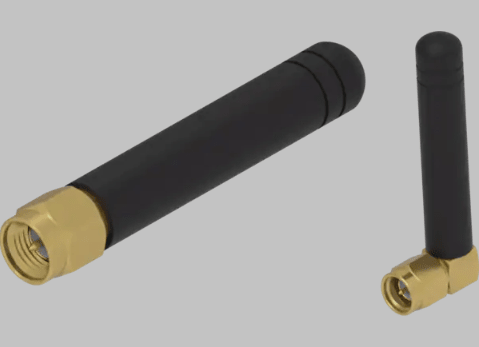New Tech Tuesdays: Wi-Fi HaLow Extends the Reach of IoT

New Tech Tuesdays
Join Mouser's Technical Content team for a weekly look at all things interesting, new, and noteworthy for design engineers.
Remember the early days of Wi-Fi®, when you’d lose your connection just by walking into the next room? We’ve come a long way since then, but range and power consumption remain critical challenges, especially for the sprawling world of the Internet of Things (IoT). In response to these challenges, the IEEE 802.11ah wireless standard, known as Wi-Fi HaLow™, was designed specifically for long-range, low-power IoT applications. This week’s New Tech Tuesdays explores how Wi-Fi HaLow addresses these challenges head-on.
Beyond the Gigahertz Barrier
When we think of Wi-Fi, we typically think of the 2.4GHz and 5GHz bands. Wi-Fi HaLow, on the other hand, operates in a completely different space—the sub-1GHz Industrial, Scientific, and Medical (ISM) band. This fundamental shift gives HaLow unique advantages. Lower-frequency radio waves travel farther and penetrate obstacles like walls, concrete, and foliage more effectively than their higher-frequency counterparts. Wi-Fi HaLow’s sub-1GHz frequencies, typically ranging from 750MHz to 930MHz, allow a single Wi-Fi HaLow access point to cover large areas up to kilometers, making it ideal for geographically dispersed applications.
Power Efficiency Meets Massive Scale
One of the biggest hurdles for large-scale IoT deployments is battery life. Constant communication can quickly drain a device’s power source. Wi-Fi HaLow was engineered from the ground up for power efficiency, incorporating advanced sleep modes and features like Target Wake Time (TWT). These mechanisms allow sensor nodes and other battery-powered devices to remain in a deep sleep state for extended periods, waking only momentarily to transmit data. This “power-sipping” approach means devices can operate for months or even years on a single battery, drastically reducing maintenance costs. This efficiency also enables a single access point to support thousands of connected devices, another key requirement for dense IoT networks.
Unlocking New Applications
Wi-Fi HaLow’s combination of long-range connectivity and power efficiency opens the door to a host of applications where traditional Wi-Fi falls short. For example, in smart agriculture, HaLow can connect soil moisture sensors across vast fields. In industrial automation, it can monitor equipment in large warehouses or factory floors without the need for complex wiring. Smart city initiatives also benefit, using HaLow for everything from public lighting control and waste management sensors to intelligent parking systems.
For these systems to function reliably, every component matters, from the microcontroller to the RF front-end. Choosing robust components, like high-performance ISM band antennas, is crucial for maximizing signal integrity and achieving the protocol’s long-range performance. With the market for Wi-Fi HaLow devices projected to grow significantly in the coming years,[1] its relevance in the future of IoT is undeniable.
The Newest Products for Your Newest Designs®
To leverage Wi-Fi HaLow’s full potential, products must incorporate components designed for the sub-1GHz spectrum. The 868MHz/915MHz ISM band antennas (Figure 1) from TE Connectivity provide reliable performance and maximize the long-range capabilities of Wi-Fi HaLow-based designs. These antennas ensure strong signal integrity and reliable data transmission in vast or obstacle-rich environments.

Figure 1: TE Connectivity 868MHz/915MHz ISM band antennas offer a direct-to-device SMA male connector for ease of installation. (Source: Mouser Electronics)
Tuesday’s Takeaway
Wi-Fi HaLow isn’t here to replace the Wi-Fi on your laptop or phone. Instead, it extends the Wi-Fi ecosystem into the low-power, wide-area network (LPWAN) space. By leveraging the sub-1GHz spectrum, it delivers superior range and obstacle penetration while using sophisticated power-saving modes to enable massive, battery-operated IoT deployments. This protocol represents a powerful and familiar IP-based solution for building the next generation of connected devices.
Sources
[1]https://www.prnewswire.com/apac/news-releases/over-100-million-wi-fi-halow-devices-to-arrive-on-the-market-by-2029-as-the-need-for-scalable-robust-extended-range-wireless-connectivity-accelerates-302333397.html